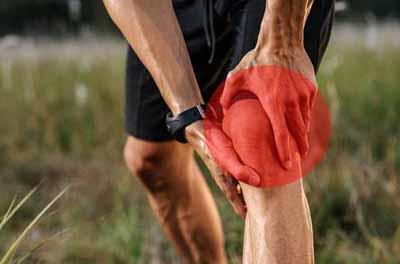
Did you know.. that the knee is one of the largest joints that has the most complicated mechanism in the body. Not only that, the human knee is an organ that supports almost the entire body weight. Support when walking, running, jumping, or doing other activities. The existence of a joint in the knee allows the lower leg to move in the direction of movement of the thigh while supporting the body's weight.
The joints in the human knee are tough. Well, each person walking, the knee can support the body three to six times the person's body weight. However, the more weight you gain, the greater the stress on your knees. So, it is not surprising that the knee is prone to injury.
Knee injury or knee injury is one of the most common types of injuries. In the athlete group alone, it is estimated that as many as 2.5 million athletes injure their knee each year. Injuries caused by physical activity when doing sports such as dislocated joint muscles, falling, or hitting something. Pain, swelling, difficulty bearing weight, and movement instability are some of the common symptoms that usually occur.
1. Age and gender. The older you are, the higher your risk of knee injury. Injuries will also take longer to heal compared to a young age.
2. Sports using uncomfortable footwear
3. Sudden movement changes in the legs during exercise
4. Improper movement when exercising repeatedly.
5. History of trauma to the knee (fall with the knee hitting a hard surface, direct impact to the knee from another sports player or accident).
6. Doing sports that put a high risk of knee injury such as running, basketball, futsal, football, wrestling and lifting weights. These sports pose a high risk if they are not done in the right position and practice too many hours.
1. Feeling knee pain either with a history of trauma to the knee or without trauma (slow or sudden). Pain increases when the knee is moved and improves when the knee is rested.
2. Feel pain when lightly pressed on the knee area.
3. There is a change in the shape of the knee (for example it looks more bent), especially after trauma.
4. There are signs of knee infection such as swelling, redness, and feeling warm.
5. You can see bruising and swelling in the knee area.
6. Feel the weakness of the knee. The knee seems unstable and cannot support the body properly.
7. Difficulty straightening legs and knees feeling stiff as if locked.
8. Difficulty performing daily activities (standing, kneeling, squatting, going up and down stairs).
There are several tips for preventing knee injuries, whether during sports or in daily activities.
Even if you have followed the tips above, it is still possible to experience a knee injury. Muscle repair massage can be done to relieve and restore an injured tough.
If you have questions about muscle conditions related to knee injuries, you can consult PH Remedial Massage to get more information.
2022 PH Remedial Massage. All Rights Reserved. | Designed By cvsip